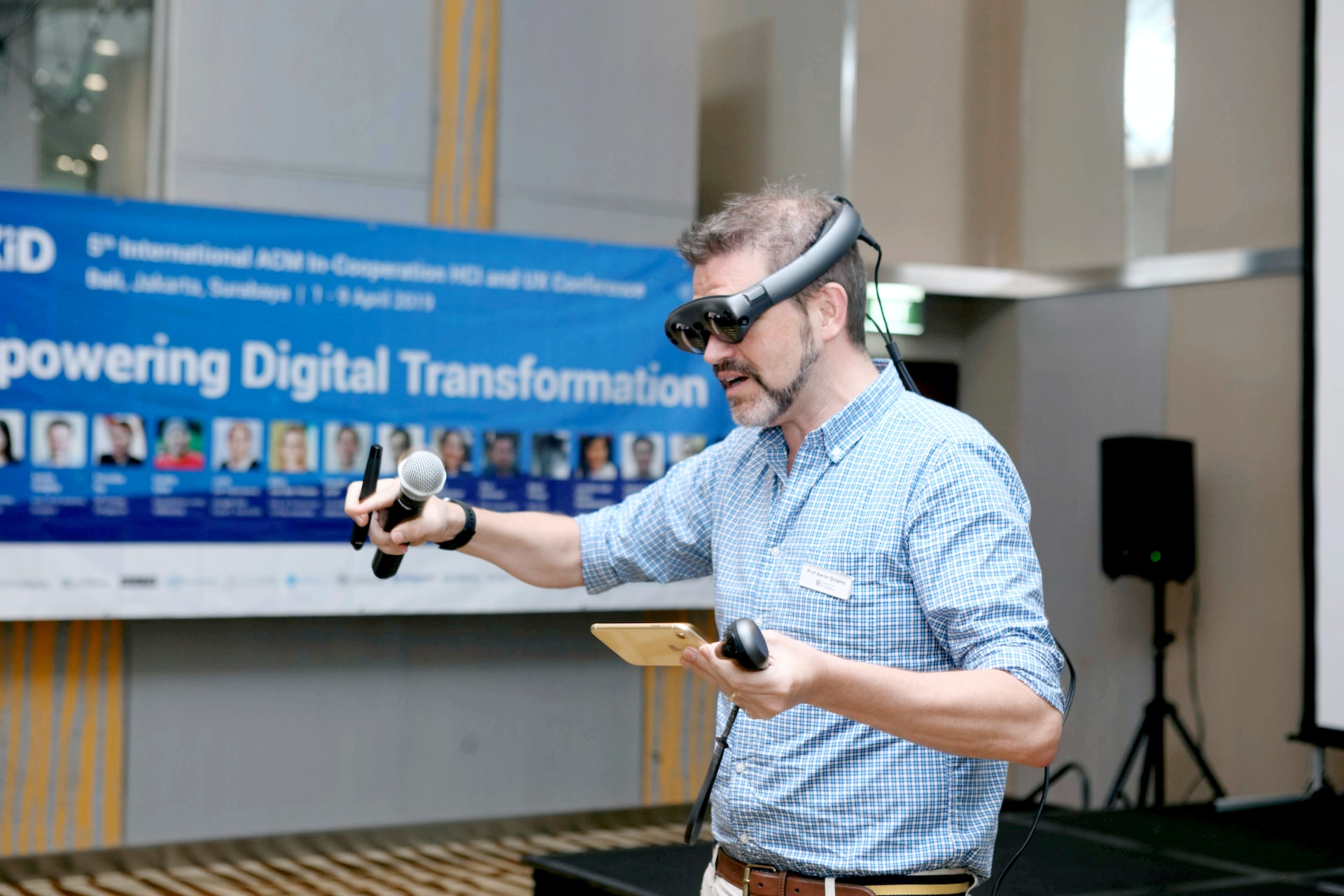In today’s rapidly evolving business landscape, the procurement process plays a pivotal role in determining the success of an organization. Traditional procurement methods faced numerous challenges, from manual errors to delayed decision-making. However, the integration of cutting-edge technologies has brought about a paradigm shift, with Augmented Reality (AR) emerging as a key player in enhancing efficiency.
A. Definition of AR in Modern Procurement
Augmented Reality, commonly known as AR, involves overlaying digital information onto the real world. In the context of procurement, AR seamlessly integrates digital elements into the physical procurement process, providing users with a comprehensive view of data, inventory, and supply chains.
B. Significance of Efficiency in Procurement
Efficiency is the cornerstone of successful procurement. The ability to make informed decisions swiftly, streamline processes, and optimize resources directly impacts an organization’s bottom line. AR, with its immersive and data-enhancing capabilities, has emerged as a powerful tool in unlocking unprecedented efficiency in modern procurement practices.
II. The Evolution of Procurement
A. Traditional Procurement Challenges
Traditional procurement methods were fraught with challenges such as manual errors, time-consuming processes, and limited visibility into the supply chain. These hurdles often resulted in inefficiencies, increased costs, and compromised decision-making.

B. Integration of Technology in Procurement
Recognizing the need for a more streamlined approach, businesses began integrating technology into procurement processes. The evolution from manual to automated systems marked a significant leap forward, setting the stage for the incorporation of advanced technologies like AR.
III. Understanding Augmented Reality (AR)
A. Definition and Basics of AR
AR combines digital and physical realities by superimposing computer-generated information onto the user’s view of the real world. In procurement, this translates to a dynamic and interactive visualization of data, enabling users to make more informed decisions.
A. Applicaton of AR in Various Industries
Beyond procurement, AR has found applications in various industries, including healthcare, manufacturing, and education. Its adaptability makes it a versatile solution for enhancing processes and improving user experiences across diverse sectors.
IV. AR in Procurement: A Paradigm Shift
A. Enhancing Decision-Making Processes
One of the key contributions of AR in procurement is its ability to enhance decision-making processes. By providing real-time insights and visualizations, AR empowers decision-makers to assess situations more comprehensively, leading to better-informed choices.

B. Streamlining Supply Chain Management
AR facilitates a more streamlined supply chain management process by offering real-time tracking, inventory visualization, and predictive analytics. This enables businesses to optimize their supply chains, reduce delays, and enhance overall operational efficiency.
V. Benefits of Implementing AR in Procurement
A. Increased Efficiency and Productivity
The implementation of AR in procurement results in increased efficiency and productivity. Tasks that once required significant time and effort can now be streamlined, allowing procurement professionals to focus on more strategic aspects of their roles.
B. Cost Reduction and Resource Optimization
AR’s ability to optimize resource allocation and streamline processes directly contributes to cost reduction. By minimizing errors, reducing lead times, and improving overall operational efficiency, organizations can achieve significant cost savings.
VI. Case Studies: Successful Implementation of AR in Procurement
A. Real-world Examples
Several companies have successfully implemented AR in their procurement processes, showcasing tangible improvements in efficiency and decision-making. Case studies highlight the diverse applications of AR and its positive impact on different industries.
B. Lessons Learned
Examining successful case studies provides valuable insights into the key factors contributing to effective AR implementation. Understanding these lessons learned is crucial for organizations planning to adopt AR in their procurement strategies.
VII. Overcoming Challenges in AR Adoption
A. Resistance to Technological Change
While the benefits of AR in procurement are evident, resistance to technological change remains a challenge. Addressing this resistance involves effective communication, training programs, and demonstrating the tangible advantages that AR brings to the procurement process.

B. Addressing Security Concerns
The integration of AR raises valid security concerns, particularly regarding data privacy and potential vulnerabilities. Robust cybersecurity measures and comprehensive training programs are essential to mitigate these concerns and ensure a secure AR environment.
VIII. Future Trends in AR and Procurement
A. Emerging Technologies
As technology continues to evolve, the future of AR in procurement holds exciting possibilities. Emerging technologies, such as Artificial Intelligence (AI) and Internet of Things (IoT), are likely to further enhance the capabilities of AR, opening new avenues for efficiency and innovation.
B. Forecast for the Future
Industry experts predict a continued rise in the adoption of AR in procurement, with more organizations recognizing its transformative potential. The forecast for the future includes increased integration, enhanced features, and a broader range of applications for AR in procurement.
IX. The Human Element in AR-Driven Procurement
A. Training and Skill Development
While AR brings automation and efficiency, the human element remains crucial. Training programs and skill development initiatives are essential to ensure that procurement professionals can effectively leverage AR tools and contribute to their organizations’ success.
B. Ensuring User Adoption
Successful AR implementation requires not only technological integration but also a focus on user adoption. Creating user-friendly interfaces, providing ongoing support, and showcasing the tangible benefits of AR are key to ensuring widespread acceptance and utilization.
X. Integrating AR into Existing Procurement Systems
A. Overview of Key Players
The AR vendor landscape is diverse, with various companies offering unique solutions for procurement. An overview of key players and their strengths can guide organizations in choosing the AR solution that best aligns with their specific procurement needs.
B. Best Practices for Implementation
Implementing AR successfully involves adhering to best practices, including a phased rollout, comprehensive training, and regular assessments. Organizations can leverage the experiences of early adopters to establish a roadmap for seamless AR integration into their procurement systems.
XI. AR Vendor Landscape
A. Overview of Key Players
The AR vendor landscape is diverse, with various companies offering unique solutions for procurement. An overview of key players and their strengths can guide organizations in choosing the AR solution that best aligns with their specific procurement needs.
B. Choosing the Right AR Solution
Selecting the right AR solution requires a careful evaluation of features, scalability, and compatibility with existing systems. Engaging in thorough research and seeking recommendations from industry peers can assist organizations in making informed decisions.
XII. ROI of AR in Procurement
A. Measuring Success
Determining the Return on Investment (ROI) of AR in procurement involves assessing both quantitative and qualitative factors. Metrics such as time saved, error reduction, and improved decision-making contribute to a comprehensive evaluation of AR’s success.
B. Demonstrating Value
Effectively demonstrating the value of AR to key stakeholders is crucial for continued support and investment. Clear communication of tangible benefits and success stories reinforces the importance of AR in driving efficiency within the procurement process.
XIII. Addressing Common Misconceptions about AR in Procurement
A. Clearing Myths
Misconceptions surrounding AR in procurement may hinder its adoption. Clearing common myths, such as complexity and high costs, is essential to foster a more accurate understanding of AR’s capabilities and potential benefits.
B. Realistic Expectations
Setting realistic expectations is vital for organizations embarking on the AR journey. Understanding the capabilities and limitations of AR in procurement ensures a more successful and sustainable integration process.
A. Summarizing the Impact of AR in Modern Procurement
In conclusion, the role of AR in modern procurement is transformative. From enhancing decision-making to streamlining supply chain management, AR offers a myriad of benefits that contribute to increased efficiency and productivity in the procurement process.
FAQ
How does AR enhance decision-making in procurement?
AR enhances decision-making in procurement by providing real-time insights and visualizations, empowering decision-makers to assess situations more comprehensively.
What industries have successfully implemented AR in procurement?
Various industries, including manufacturing, healthcare, and logistics, have successfully implemented AR in procurement to enhance efficiency and decision-making.
How can companies address resistance to AR adoption?
Companies can address resistance to AR adoption through effective communication, training programs, and demonstrating the tangible advantages of AR in procurement.
Are they security risks associated with AR in procurement?
The integration of AR in procurement raises security concerns, which can be mitigated through robust cybersecurity measures and comprehensive training programs.
What is the expected ROI after implementing AR in procurement?
The expected ROI after implementing AR in procurement includes metrics such as time saved, error reduction, and improved decision-making, contributing to overall operational efficiency.
In the ever-evolving landscape of technology, Augmented Reality (AR) has emerged as a groundbreaking innovation, transforming the way we perceive and interact with the digital world. However, with great advancements come great scrutiny. There are numerous misconceptions surrounding the environmental impact of AR technology. This article aims to dissect these myths and present the facts, shedding light on the true environmental implications of AR.




